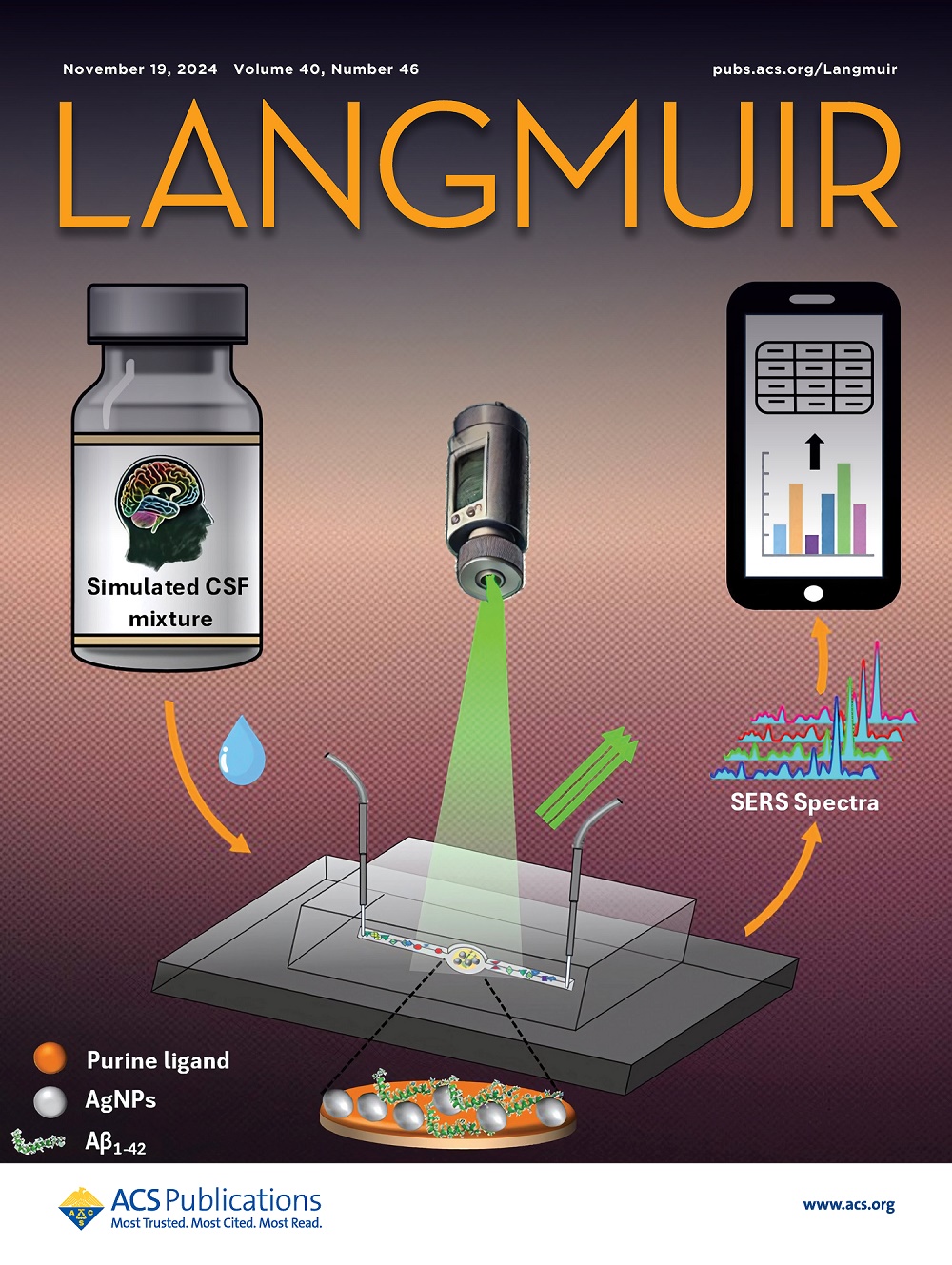无缺陷环聚乙二醇在金纳米颗粒上的独特复杂结构及其物理吸附机理。
IF 3.7
2区 化学
Q2 CHEMISTRY, MULTIDISCIPLINARY
引用次数: 0
摘要
金纳米粒子(AuNPs)的表面功能化以赋予胶体稳定性是其应用的必要条件,特别是在生物医学领域。先前发现无缺陷环聚乙二醇(c-PEG)通过物理吸附到AuNPs表面具有强烈的分散稳定作用,甚至优于事实上的标准,硫代PEG (HS-PEG-OMe)。在这里,我们报告了利用核磁共振(NMR)和小角中子散射(SANS)对AuNPs/c-PEG配合物的独特结构的全面表征。此外,采用分子动力学(MD)模拟来阐明物理吸附的独特机制。通过核磁共振对吸附的c-PEG分子进行定量分析,发现其吸附密度(σ)比HS-PEG-OMe小约1个数量级。对SANS数据进行模型独立和依赖分析,进一步确定相对薄而稀疏的PEG层是c-PEG吸附的特征。物理吸附过程的MD模拟表明,c-PEG的吸附自由能绝对值大于线性HO-PEG-OH的吸附自由能绝对值。c-PEG之所以具有良好的吸附性能,是因为它的水合状态较低,吸附后从金表面释放出大量的水分子。本文章由计算机程序翻译,如有差异,请以英文原文为准。
Unique Complex Structure and Mechanism of Physisorption of Defect-Free Cyclic Poly(ethylene glycol) onto Gold Nanoparticles.
Surface functionalization of gold nanoparticles (AuNPs) to impart colloidal stability is imperative for their applications, especially in biomedical fields. A drastic dispersion stabilizing effect of defect-free cyclic poly(ethylene glycol) (c-PEG) through their physisorption onto the surface of AuNPs was previously discovered, which was even superior to the de facto standard, thiolated PEG (HS-PEG-OMe). Here, we report a comprehensive characterization of the unique structure of the AuNPs/c-PEG complex using nuclear magnetic resonance (NMR) and small-angle neutron scattering (SANS). Furthermore, molecular dynamics (MD) simulations were employed to elucidate the distinct mechanism of physisorption. Quantification of the adsorbed c-PEG molecules by NMR revealed that the adsorption density (σ) is approximately 1 order of magnitude smaller than that of HS-PEG-OMe. Model-independent and -dependent analyses of the SANS data were used to further identify the relatively thin and sparse PEG layer as a characteristic of c-PEG adsorption. MD simulations of the physisorption events revealed the absolute value of free energy of adsorption for c-PEG to be greater than that for linear HO-PEG-OH. The favorable adsorption of c-PEG is suggested to arise from its less hydrated state and the larger number of water molecules that are released from the gold surface upon PEG adsorption.
求助全文
通过发布文献求助,成功后即可免费获取论文全文。
去求助
来源期刊

Langmuir
化学-材料科学:综合
CiteScore
6.50
自引率
10.30%
发文量
1464
审稿时长
2.1 months
期刊介绍:
Langmuir is an interdisciplinary journal publishing articles in the following subject categories:
Colloids: surfactants and self-assembly, dispersions, emulsions, foams
Interfaces: adsorption, reactions, films, forces
Biological Interfaces: biocolloids, biomolecular and biomimetic materials
Materials: nano- and mesostructured materials, polymers, gels, liquid crystals
Electrochemistry: interfacial charge transfer, charge transport, electrocatalysis, electrokinetic phenomena, bioelectrochemistry
Devices and Applications: sensors, fluidics, patterning, catalysis, photonic crystals
However, when high-impact, original work is submitted that does not fit within the above categories, decisions to accept or decline such papers will be based on one criteria: What Would Irving Do?
Langmuir ranks #2 in citations out of 136 journals in the category of Physical Chemistry with 113,157 total citations. The journal received an Impact Factor of 4.384*.
This journal is also indexed in the categories of Materials Science (ranked #1) and Multidisciplinary Chemistry (ranked #5).
 求助内容:
求助内容: 应助结果提醒方式:
应助结果提醒方式:


